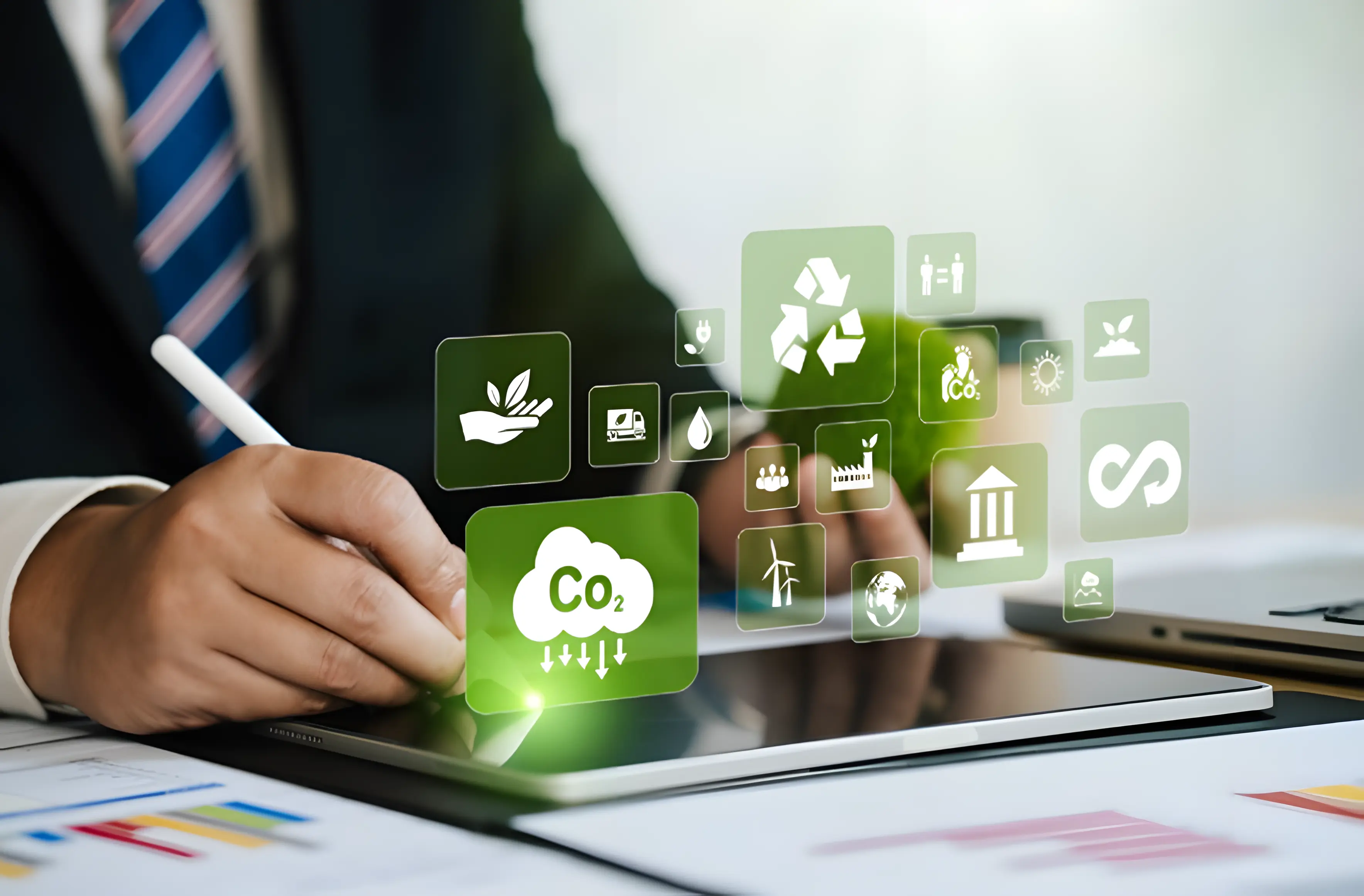How to Effectively Secure Funding for Climate Actions in 2025: A Guide for Companies Using NEOGAGE Carbon Footprint
23 July, 2025
In the face of climate change and increasingly stringent ESG regulations and EU directives, an organization’s carbon footprint is not only an obligation but also a real opportunity to secure funding. The year 2025 brings new editions of programs supporting environmental transformation, targeting both large enterprises and MŚP.

Spis treści
Why Is Financing Climate Actions a Timely Topic?
Reducing greenhouse gas emissions is no longer just a gesture of social responsibility – it has become a market, regulatory, and financial requirement. Organizations investing in renewable energy sources, energy efficiency, and emission reductions are increasingly able to:
- gain a competitive advantage,
- meet customer demands (especially from international clients),
- access grants, tax reliefs, and preferential financing.
Implementing Net Zero strategies and reporting CO₂ emissions are often prerequisites for applying for public and private funding. Therefore, companies must have reliable data to demonstrate their commitment to climate action.
Main Sources of Grants in 2025
In 2025, a variety of national and European programs will be available – dedicated to both large enterprises and SMEs. Key funding sources to watch include:
- National Fund for Environmental Protection and Water Management (NFOŚiGW)
Programs: Green Industry, Energy Plus, New Energy Scope: process modernization, thermal modernization, renewable energy sources (RES), energy storage, and energy transformation of facilities. - Voivodeship Funds for Environmental Protection and Water Management (WFOŚiGW)
Local competitions with simplified procedures – ideal for smaller companies, institutions, and organizations. - Modernization Fund
Support for large enterprises in energy-intensive sectors – e.g., chemical, metallurgy, cement, and industrial processing – investing in emission reduction. - Polish Agency for Enterprise Development (PARP)
Competitions for SMEs focusing on green innovations, circular economy, low-emission technologies, and transformation technologies. - LIFE Program (EU)
International projects related to climate protection, environment, energy efficiency, and biodiversity. Cooperation with partners from other EU countries increases chances of application success. - Horizon Europe
Research and development grants, including technologies aimed at reducing CO₂ emissions and supporting a zero-emission economy.

Which Projects Have the Highest Chances of Funding?
| Kryterium | Opis |
|---|---|
| Measurable CO₂ Emission Reduction | Projects delivering real and documented reductions in greenhouse gas emissions. |
| Emission Monitoring Systems | Implementation of tools and processes for monitoring and reporting carbon footprint. |
| Energy Modernization | Upgrading production lines or infrastructure to improve energy efficiency. |
| Renewable Energy Sources | Use of PV panels, heat pumps biogas plants, and other renewable energy sources (RES). |
| Support for Net Zero Strategies | Projects aligned with emission reduction goals in line with Net Zero and ESG strategies. |
| Compliance with Standards | Adherence to international standards such as GHG Protocol ISO 14064, and ISO 50001. |
Projects with ready emission documentation, baseline reports, or sensitivity analysis are evaluated more favorably by funding institutions.
How to Prepare for Applying for Grants?
- Determine your starting point:
- Has your organization calculated its carbon footprint?
- Does Scope 1, 2, and 3 identify the emission structure?
- Select the appropriate program:
- Check deadlines, types of eligible costs, and required attachments.
- Assess whether the project aligns with the environmental goals of the specific call.
- Gather data and documentation:
- Emissions, energy consumption, fleet data, transport purchases, processes.
- Evidence, invoices, calculations – everything should be consistent and transparent.
- Ensure ESG compliance:
- Many programs require demonstrating how the project impacts sustainable development and the company’s climate strategy.
How Does NEOGAGE Carbon Footprint Support the Application and Reporting Process?
NEOGAGE Carbon Footprint is a professional greenhouse gas emissions management application. With it, you can:
- Calculate the full carbon footprint of your organization, product, or project,
- Collect data from various departments (automated data and indicator import),
- Generate reports compliant with GHG Protocol and ISO standards,
- Prepare documentation for grant applications (input data, indicators, attachments, source documentation),
- Conduct emission reduction simulations and sensitivity analysis (Product Carbon Footprint),
- Organize data for environmental and ESG audits,
- Gain confidence that your documentation meets formal requirements of public institutions and grant providers.
Summary and Recommendations
2025 is an ideal year to invest in climate actions with the support of grants. Companies that prepare their documentation and ensure the reliability of emission data early on will have a privileged position.
- Take advantage of available funding sources.
- Choose projects aligned with climate goals and ESG regulations.
- Gather emission data and prepare professional reports.
- Use NEOGAGE Carbon Footprint to increase your chances of success.
Need help preparing data for grants? Contact us.